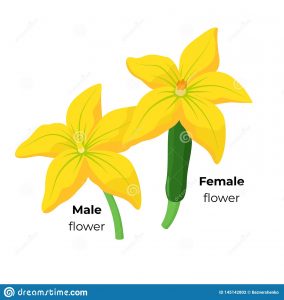designed for the way women work.
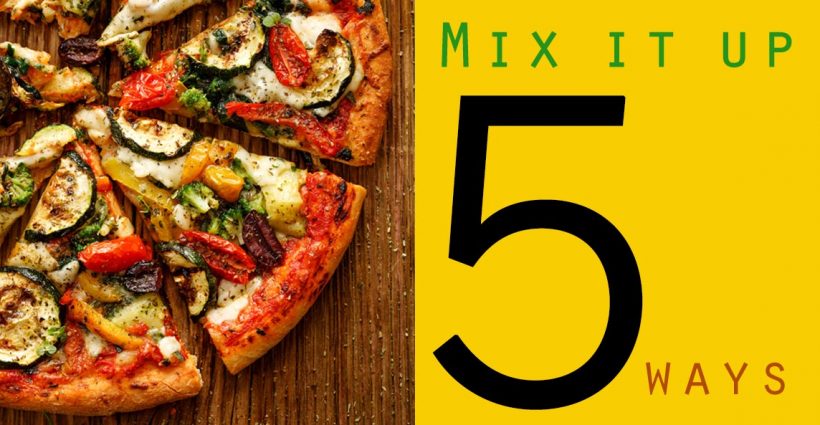
Planning Your Garden? 5 Ways to Mix it up This Year
Category: Presenting "The Curious Gardener"
Pizza Toppings:
Now is the time to think about your favorite toppings for pizza cooked outdoors in your new electric pizza oven or sprinkled on top of a no frills store-bought pizza. The most popular garden toppings are tomatoes, bell peppers and red onions. Have you thought of adding some thinly sliced zucchini, summer squash or even figs from your garden? Recently I read that pickles are a favorite pizza topping.
My friend Michelle makes a topping of goat cheese with cut up figs and caramelized onion for her pizzas. I love basil leaves and extra tomatoes. With a little planning, you can grow your favorite toppings. I know a few of these ingredients are going in my garden this year!
Medicinal Herbs:
Arnica is easy to grow and can be harvested as a remedy for aches and pains. We did a story on arnica here, and we have an arnica muscle rub with shea butter and peppermint that we love.
Sometimes I take a capsule of St. John’s Wort, recommended by my doctor as a sleep aid. This year I’m going to try growing and harvesting it myself. I’ll probably dry it and drink it as tea. As a plant it can be aggressive so I’ll grow it in a container.
Other easy to grow, mild herbal remedies include chamomile (relaxation), echinacea (boosts immunity), lavender (aromatherapy), coriander (aid to digestion) and calendula (treats dry skin).
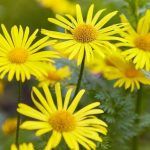
Some medicinal herbs are very powerful and can interfere with medications you may be taking, so it’s always best to check with your doctor first.
Cocktail Shrubs:
Think of a cocktail shrub as a pre-made drink mixer, or concentrate, to which you can add tonic water, ginger beer or soda water for a ‘mocktail’, or gin, vodka, bourbon or prosecco for an alcoholic beverage. Today’s craft cocktails have taken the concept to a new level of popularity. Last summer we did a story about cocktail shrubs here.
To make a shrub, select your ingredients, usually a fruit and an herb, and muddle them together with some sugar and a high-quality vinegar.
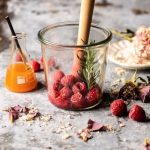
Recipes vary, but generally the mixture is left to sit at least six hours, preferably overnight or longer until all the fruit and herb juices are extracted. Strain the solids from the mixture and store the liquid – the shrub – for up to a month in the refrigerator. Check out this recipe for a lemon rosemary shrub, with a link to more recipes, and then plan your garden accordingly!
Asian, Middle Eastern and Indigenous foods:
Seed catalogs are full of varieties of Asian and Middle Eastern foods. Have you been growing ordinary radishes in your garden? Why not try Japanese wasabi radish, which has the pungent flavor of wasabi? I bought mine from Baker Creek Heirloom Seeds. In my packet of seeds from Baker Creek I also received a free packet of Bok Choy ‘Hedou Tiny’, which is a bite-sized variety of bok choy and a staple in many Asian dishes.
Coriander, a common spice found in Indian, Middle Eastern, and African cuisines, comes from the cilantro plant. My friend Debbie tells me if you let the plant go to seed, which it does quickly once the weather warms up, the seeds will be easy to harvest once they ripen. Toast the seeds at a low temperature and grind them in a spice grinder. The leaves from the cilantro plant are often called Chinese parsley.
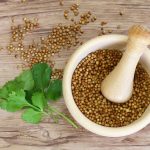
Here are some other seed varieties which I may try: Thai basil, edamame, durgesh cauliflower from India, lemongrass.
Many Indigenous farmers and gardeners, including Rebecca Webster of Ukwakhwa at the Oneida Nation Reservation in Wisconsin, who was featured in the Womanswork catalog last year, are collecting and saving seeds for trading. Corn, squash and beans are a staple of their diet and the foundation of The Three Sisters. Seeds are considered sacred in her culture.
Edible flowers as a garnish:
Nasturtium and pansies are the poster children for edible flowers for salads because they’re so colorful and pretty! But allium flowers from chive plants are another good one, as are marigolds and calendula.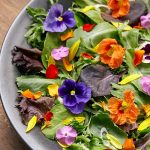
My friend Lynn loves to add zucchini and other squash blossoms to her salads. You can eat them raw or dipped in batter and fried, served over a salad or pasta. Both the male and female flowers are edible, but she cautions that you should select mostly male blossoms because the female flowers produce the fruit. Be sure to leave a few male flowers on the plant to pollinate the female flowers. (Note: One way to tell the difference between a male and female flower is that the female has an immature fruit behind the flower. The male is born on a long stalk with no immature fruit.)